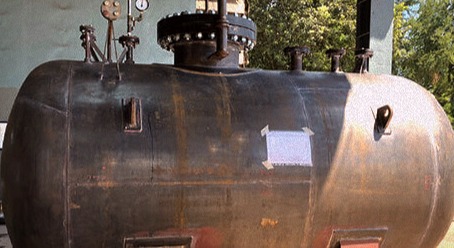Everything You Need To Know About Hydro Testing Pumps
- Abhi Shah

- Jun 6, 2022
- 4 min read
Updated: Aug 1, 2022
Hydro Testing, sometimes referred to as hydrostatic Testing, is a pressure vessel leak detection test. Filling a pressure vessel completely with water and then pressurizing it is known as Hydro Testing. Once the container has been pressurized, leaks might be found. Hydro Testing can be used to determine if the mechanical properties of a pressure vessel are acceptable.
Hydro Testing is beneficial because it employs a pressurized liquid to evaluate whether or not a leak exists, simulating what the pressure vessel will experience during its actual service life.
Hydro Testing is also used to verify the robustness of a pressure vessel's mechanical qualities. During a hydro test, when water or any other liquid is pressured inside the pressure vessel, the pressure vessel might expand. After that, the pressure vessel is depressurized, and the permanent deformation is measured. The pressure vessel is not fit for service if the permanent deformation is too large for the specification being employed.
Many various types of pressure containers, such as fire extinguishers, gas cylinders, and oil and gas pipelines, are subjected to hydro testing.
Common Applications of Hydro Testing Pumps
A hydrostatic test might theoretically help any system that has to sustain a pressure greater than the ambient pressure. Hydrostatic testing is most commonly used in the following industries and applications:
1. Hydrostatic Test for Boilers:
Hydro testing a boiler is one approach to ensure that the tubes, flanges, fittings, and connections are properly sealed. On new boilers or after any major pressure vessel work, this test is performed.
A hydro pump is used to help fill the boiler with water to start the test. The water is poured into the vessel to 1.5 times the maximum permitted working pressure (MAWP).
It is not suggested to hydro test a boiler with cold water. When you use cold water, the metal tubes will shrink and leak. It's ideal to let the water sit for at least 24 hours before completing the test to allow the water to warm up.
The boiler will be inspected for leaks after it has been filled with water. The needle on the gauge will lower if the boiler has any leaks.
2. Pipe manufacturers:

Pipes of various lengths will be hydrostatically tested at commercial pipe manufacturing factories, particularly those supplied to government organisations. They must demonstrate that each pipe fits specifications and will not fail in important applications such as naval defence vessels.
3. Cooling systems:
A/C or refrigeration cylinders or coils are routinely checked, especially in buildings where climate control is vital, such as hospitals. Such types of refrigerants are even used in cooling electronics in industrial electrical enclosures, as well as military vehicles operating in hot climates. Cooling systems are also used in municipal vehicles such as city buses, and some state Departments of Transportation may demand frequent testing to guarantee safety and good operation.
4. Fire hoses:
Critical applications such as fire hoses must be thoroughly tested to guarantee that they do not rupture or fail while in use. They're usually put through their paces before being mounted on fire trucks or sent to fire stations. Inspectors will fill hoses with fluid and pressurise them to a minimum of 300 PSI, as specified by the National Fire Protection Association (NFPA).
5. Sprinkler systems:
Many sprinkler systems are required by code to be tested on a regular basis to guarantee that they can sustain pressure and work properly when activated. A pump is connected to the main sprinkler system line and inflated to 250 PSI for at least 15 minutes.
For more details, watch our Hydro Test video:
Benefits of a Triplex Plunger Pump
So it is clear from the above applications that a hydrostatic testing firm may work with a variety of industries. As a result, it will necessitate the use of a pump capable of operating at various pressures while yet meeting the required standards.
For example, PressureJet Systems’ esteemed clients could test fire sprinklers one day and fire hoses or plumbing systems the next. An operator may use a pump rated up to 20,000 PSI for an application, then decrease it to 250 PSI for a sprinkler test.
To accomplish that threshold, the pump's pressure is changed with the help of a pressure regulator. When the pressure in the sprinkler line reaches 250 PSI, it bypasses any more pressure to maintain the line's levels.
Maintaining steady pressure, on the other hand, is where the true value is found. A triplex plunger pump is ideal for a hydrostatic test because it can't have fluctuating pressure. The pressure of a plunger pump does not ebb and flows like that of a diaphragm pump with flexible components. Both are positive displacement pumps, however they differ in several ways.
The quantity of flow output that a pump can deliver is also an issue for operators. They don't want to be stuck waiting for a system to fill and achieve the desired PSI all day. The quicker a pump's flow rate, the quicker the system will fill i.e. they are directly proportional to each other.
Triplex plunger pumps are great not just for their silent operation and regular flow and pressure, but also because they're small, portable, and easy to transfer into tight locations.
In critical systems and the hydrostatic testing pumps used to test them, failure is never an option otherwise it can lead to unwanted mishaps. That is why we pride ourselves in manufacturing the safest, most efficient and reliable hydro test pump manufacturer in the industry.
To know more about our range of products, view our product catalogue.
For enquiries, contact us via email or phone.
To know more, visit: https://www.hydrotestpump.com/ or https://pressurejet.com/pages/600/High_pressure_hydro_testing_pump.aspx




Comments